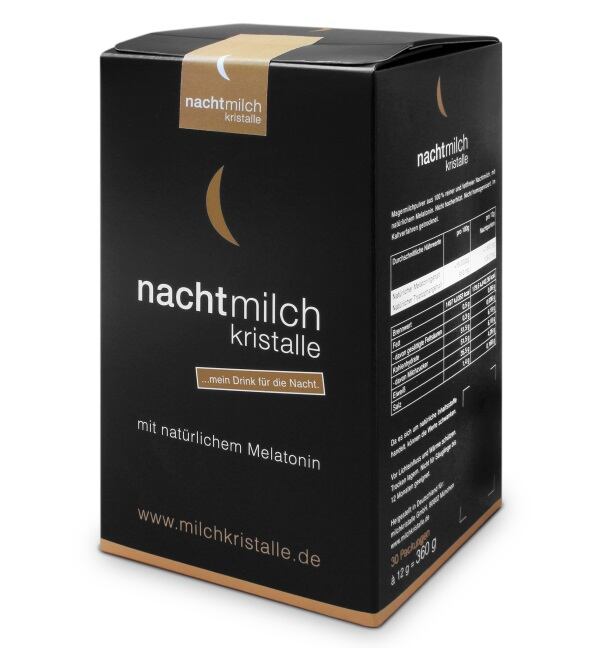Milchkristalle, based in Munich, Germany, produces the crystalline powder made from fat-free milk taken from cows milked at night, which it says therefore is naturally rich in melatonin.
Melatonin is often referred to as the ‘sleep hormone.’
TV show drives UK demand
Kai Oppel, one of the co-owners of the company with Tony Gnann, spoke to DairyReporter about the product and the connection between their product and sleep.
“I think it’s a trend because it’s important that the next day people have power and they feel good. Sleep is the way for the next day. It’s a good trend,” Oppel said.
“We are growing every year. We don’t know if it’s a trend, but people buy it again and again, and more people use our product, not only in Germany but also in the UK.”
Oppel thinks this increase in the UK was, in part, due to Channel 4 in the UK doing a segment on the company for one if its food shows.
Many factors contribute to milk melatonin
Milchkristalle went on to the market in January 2010, after several years of development.
Through a special method of cold processing this night milk, milk crystals are created. The company says that one gram contains over 100 times more melatonin than regular milk.
The levels of melatonin in milk vary depending on light, diet and the time of milking. The company’s website explains the science of melatonin in milk, noting that it is discharged into the bloodstream at night. During lactation, melatonin ends up in the milk, thereby creating the basis for Nacht-Milchkristalle, they state.

Night milk not a new concept
Night milk, and marketing of its various products, has been tried before, with varying degrees of success.
“We’re not the first who tried to enrich milk with melatonin. More than 10 years ago in Switzerland there was a farmer who tried to make milk at night. Also in Norway and Japan. Ten or 15 years ago, Tony saw this, and thought it was a nice idea, and he had the possibility, with many cows, to try it,” Oppel said.
Light a key factor
But what made the difference, says Oppel, was experimenting and working with appropriate light levels and wavelengths.
“Most people only tried to milk the cows at night, but this is only one factor. Tony discovered you need much light during the day, and no light, or long wave light – we have red lights – at night.”
At a specific time at night, the concentration of melatonin in milk is at its highest, according to the company. Their milk has to be ‘harvested’ before sunrise to make high-melatonin milk crystals. And it has to be done quickly. Once daylight, or shorter wavelengths, reaches the cows’ eyes, their melatonin levels drop to zero within minutes, the company says.
“There are special lamps in the stables, which took some years of development. The lamps can be switched on during the day also. Two years ago, we found out that our milk also contains very high rates of vitamin D, which is produced by sunlight. It’s good for the cows. Because of this, we have lower health costs,” Oppel added.
Light for milking
The red lights are also important for milking, as they allow for the milking to take place, and the melatonin levels don’t drop, Oppel said.
“We have to see something if we’re going to milk them!” he laughed.
Milchkristalle says that to achieve high levels of melatonin in milk, it is important the animals are fed plants rich in the amino acid tryptophan, such as alfafa. The special diet the company’s cows are fed is high in the amino acid, which contributes to the end product.

Adding new markets
The high vitamin D content is something the company is keen to capitalize on, for example in places such as Sweden, where light can be an issue in winter, Oppel noted.
They are also looking into the Chinese market.
“This year we want to start in China. It takes a bit of time, but it seems after two years this will be the first year we can sell it there,” Oppel said.
